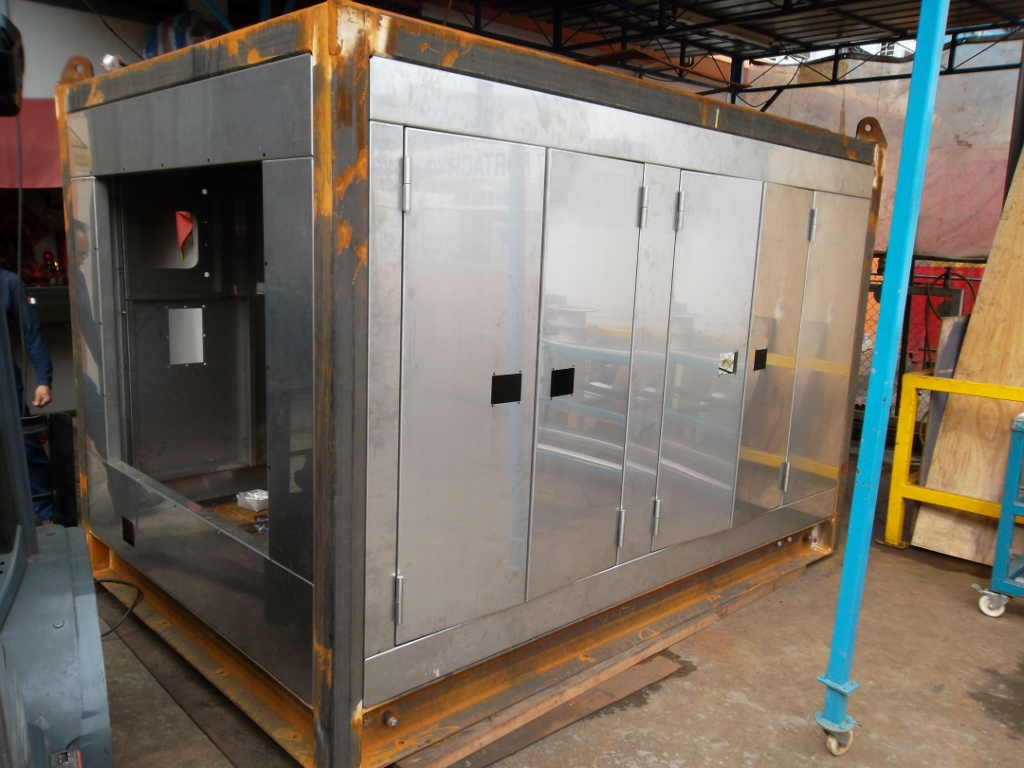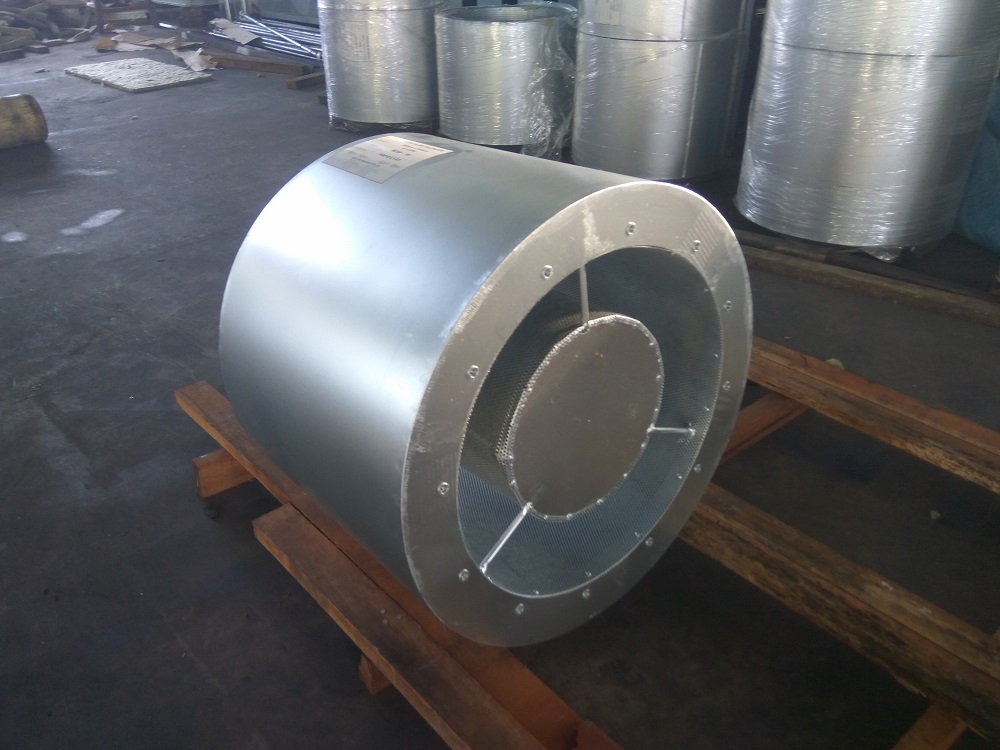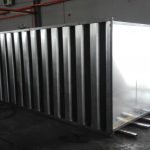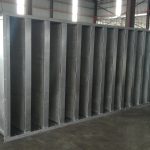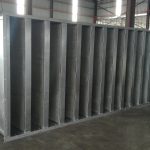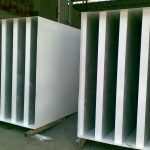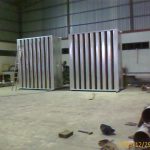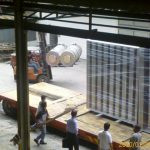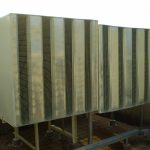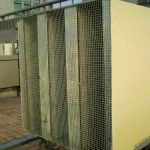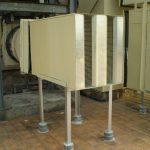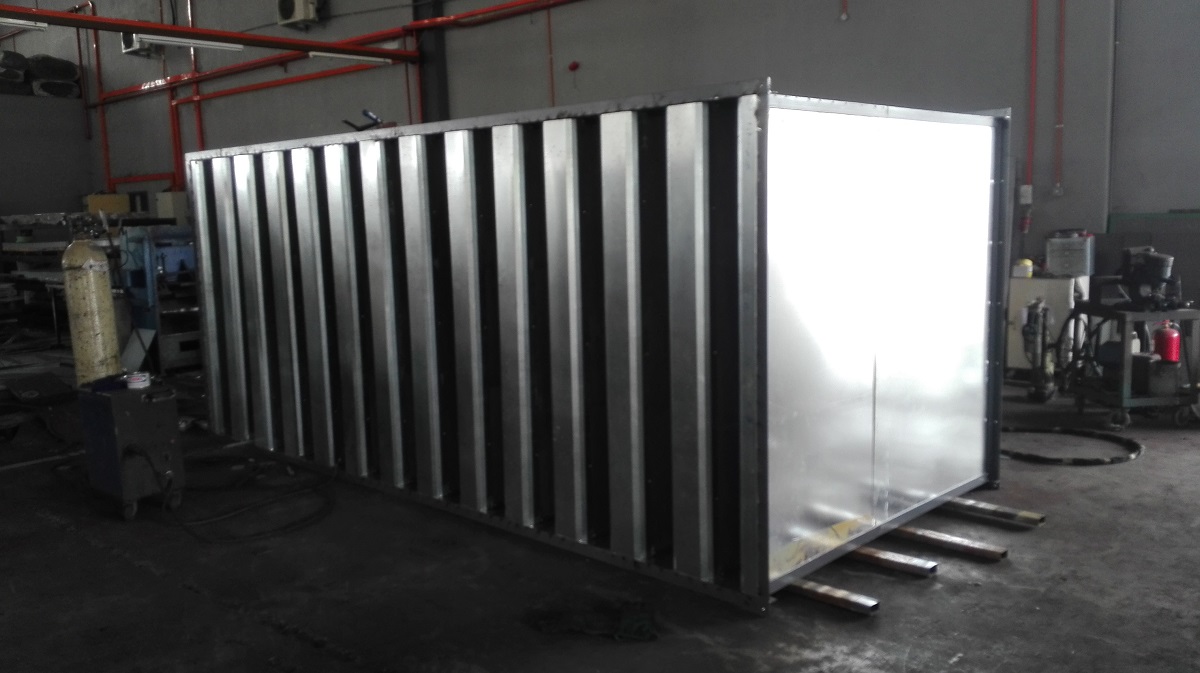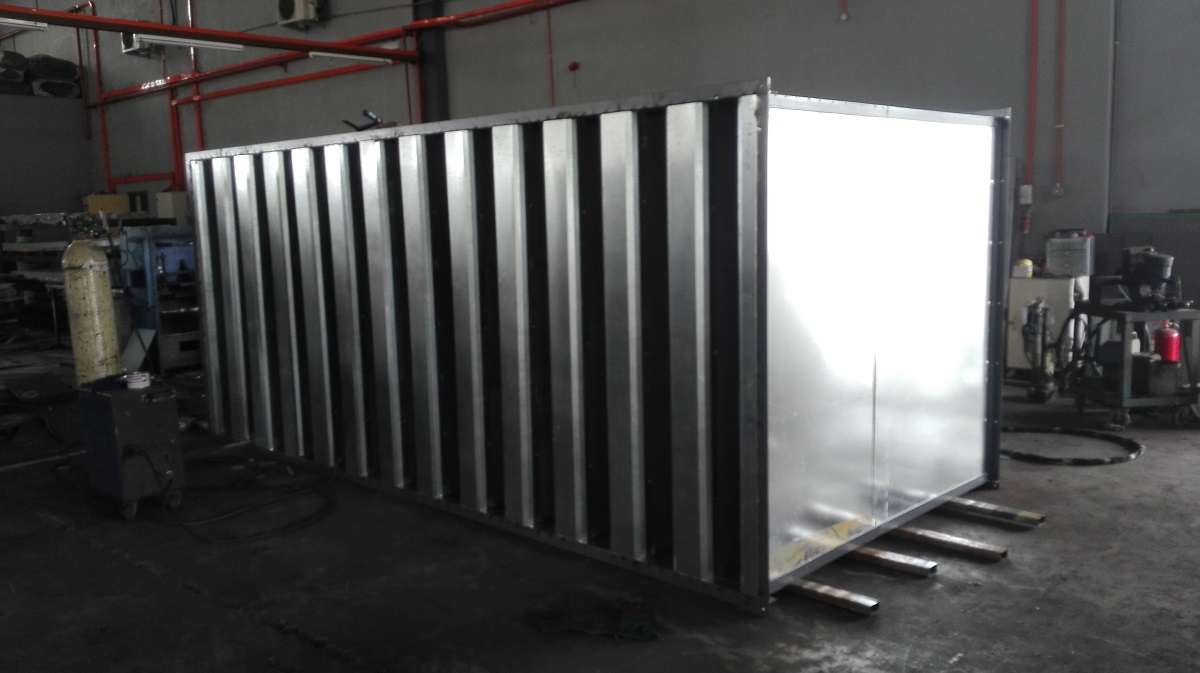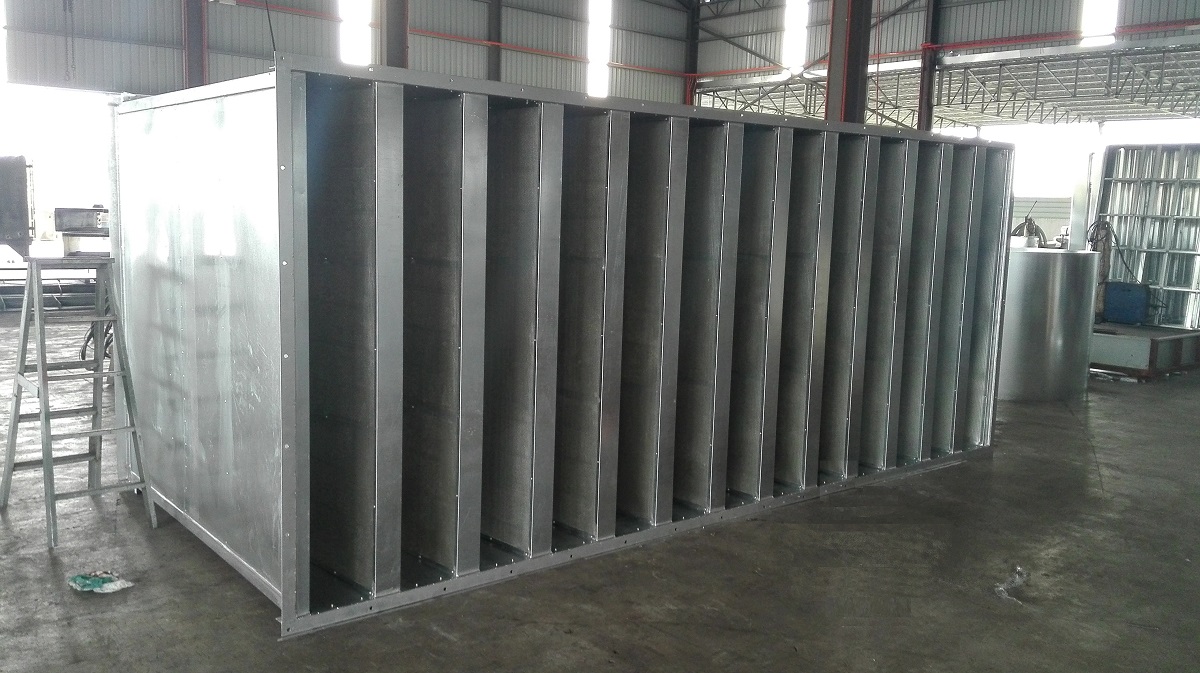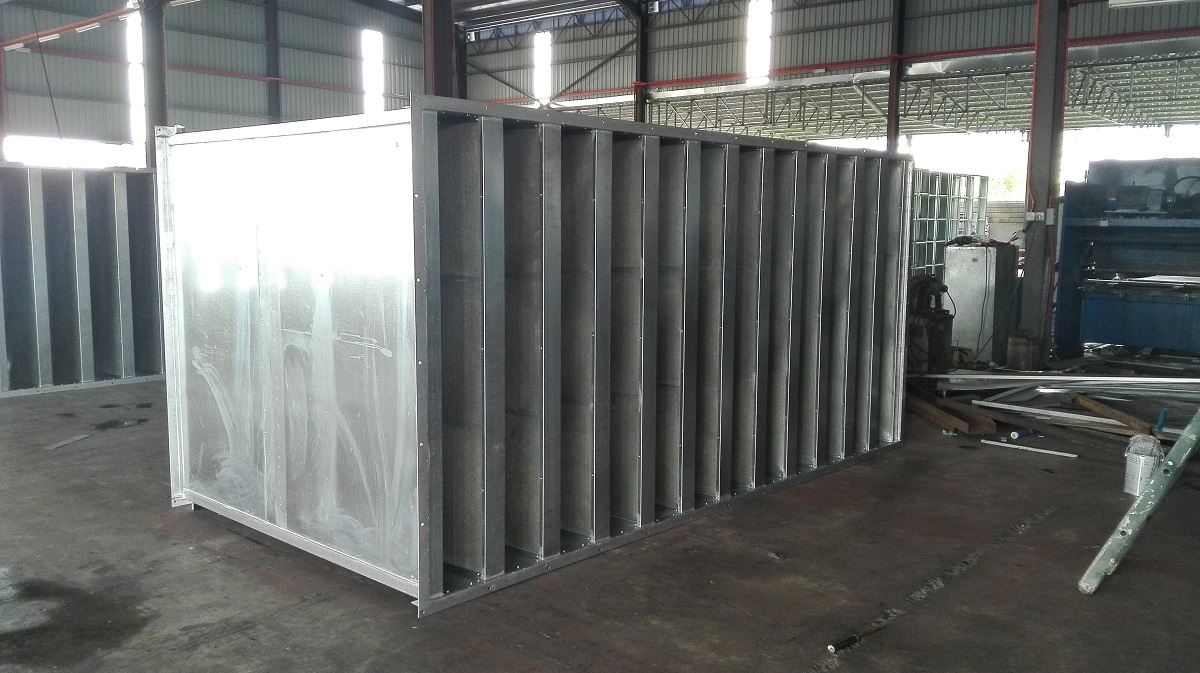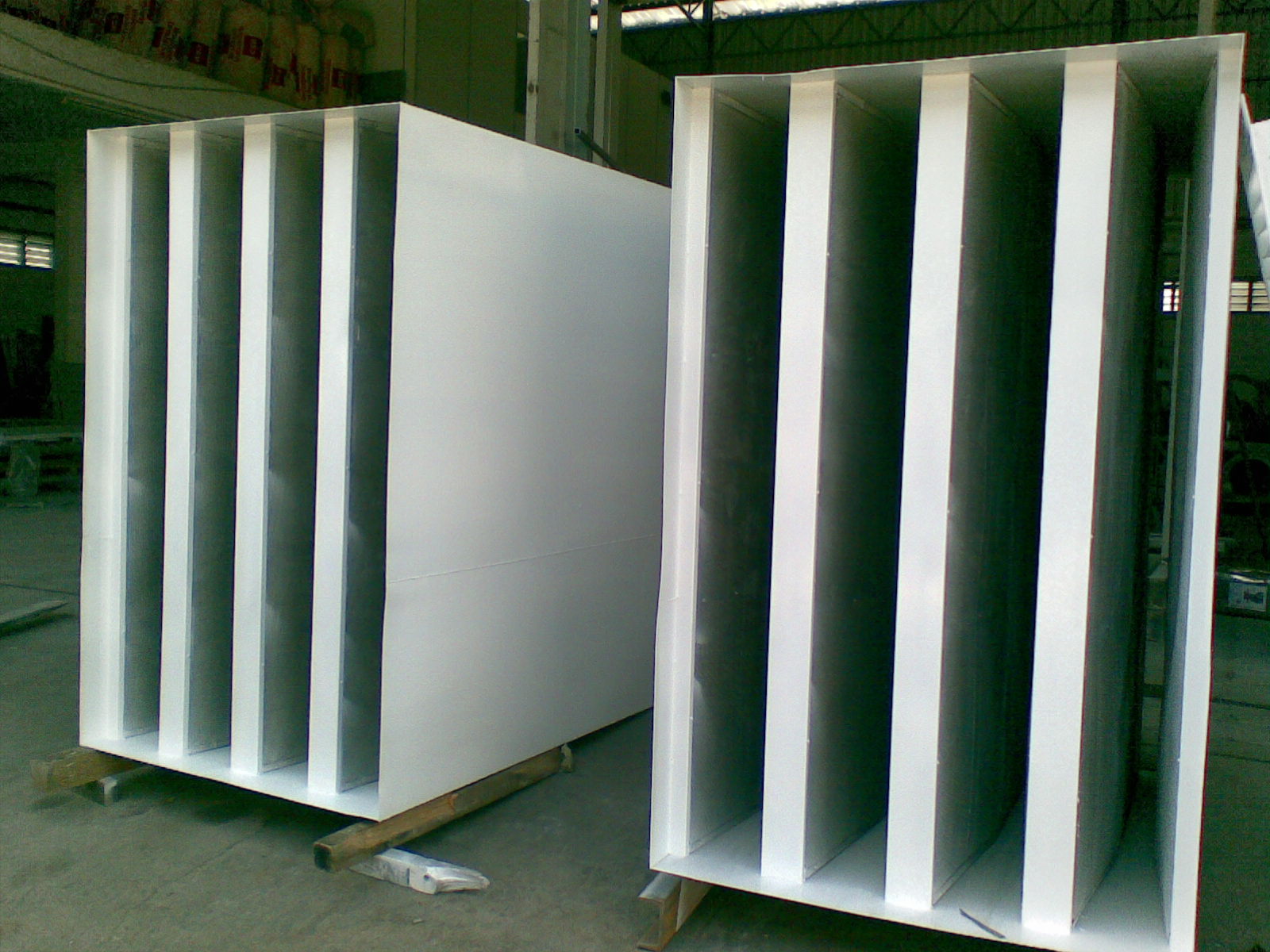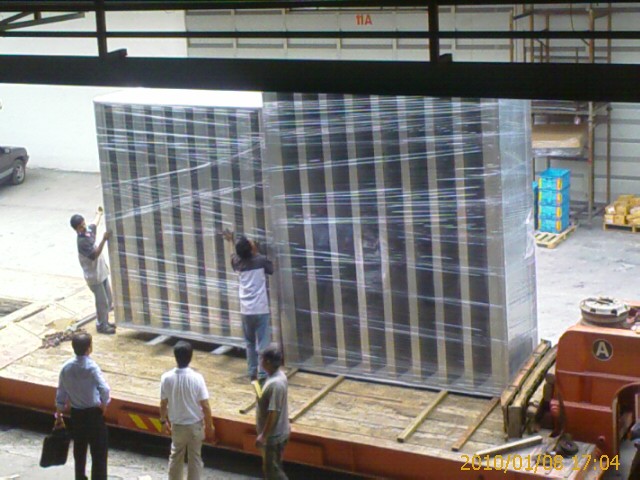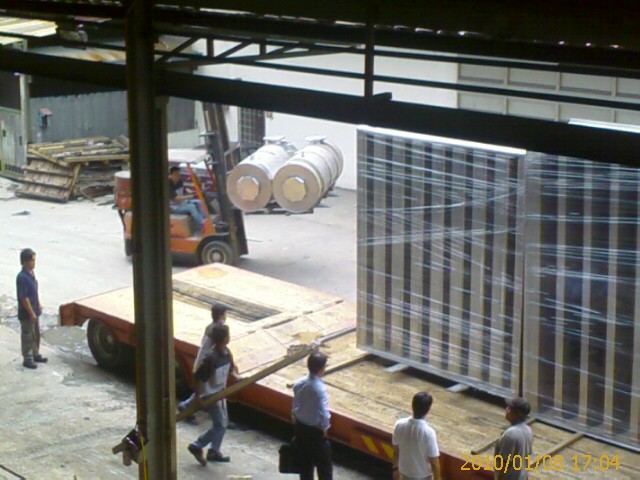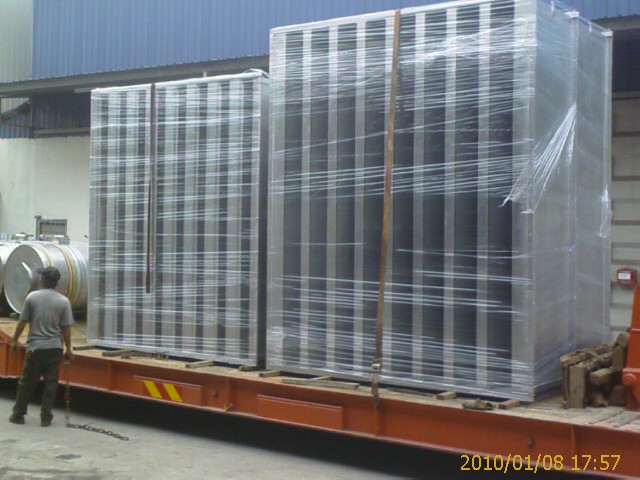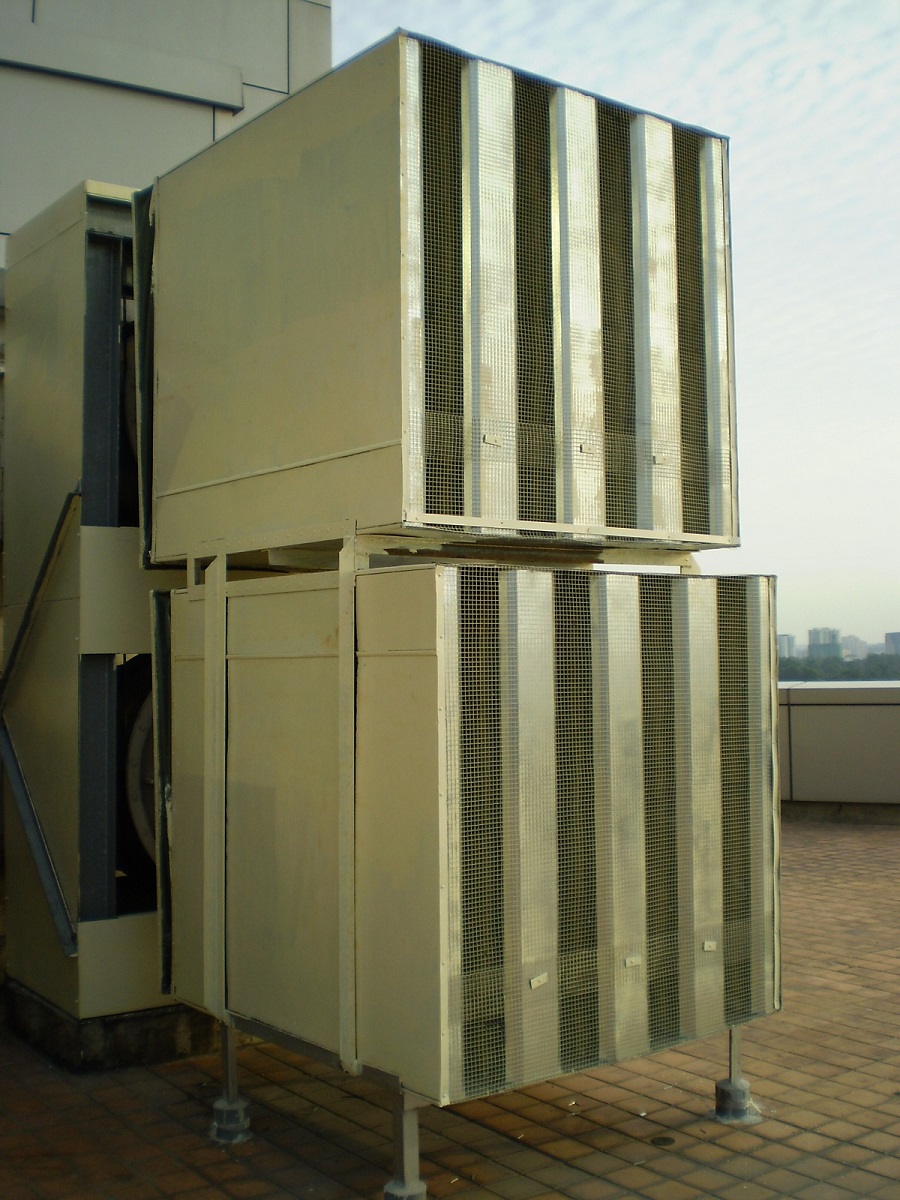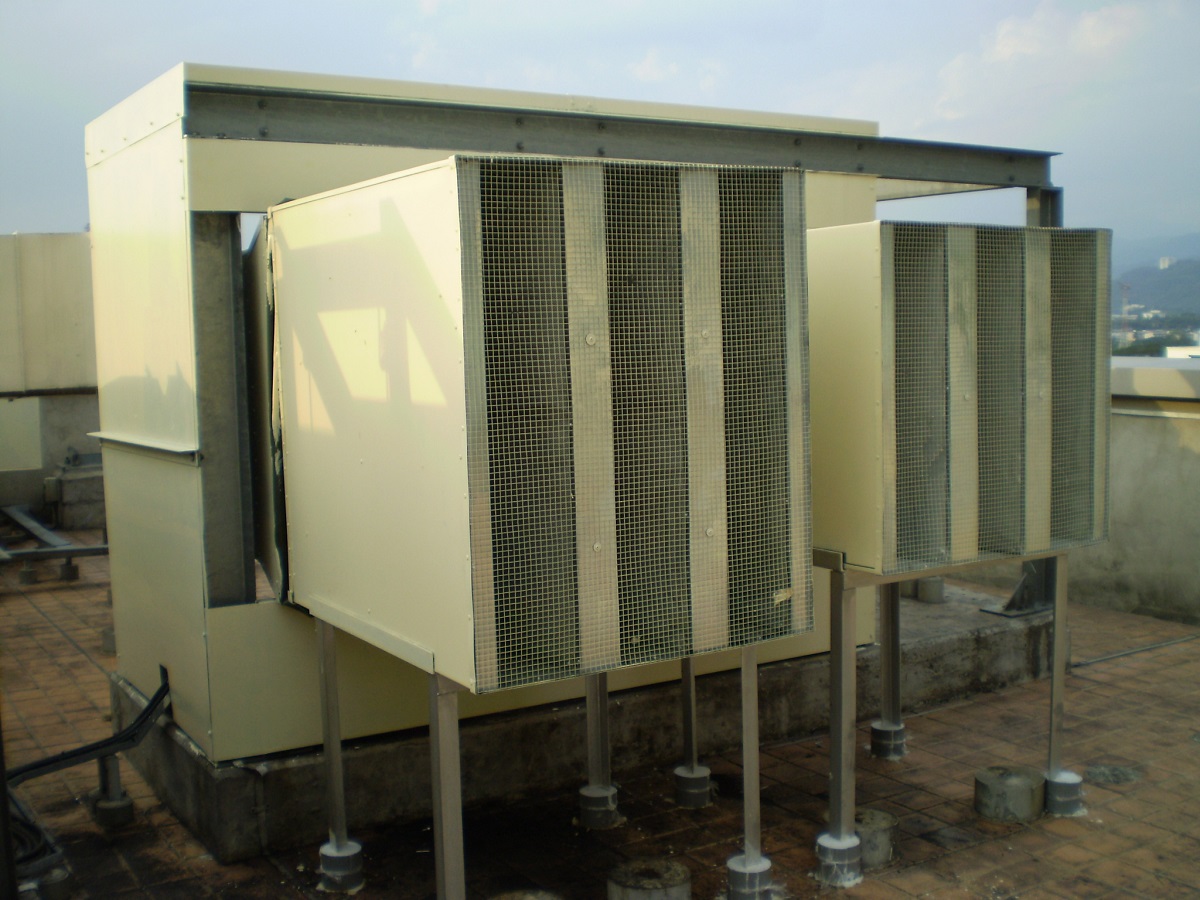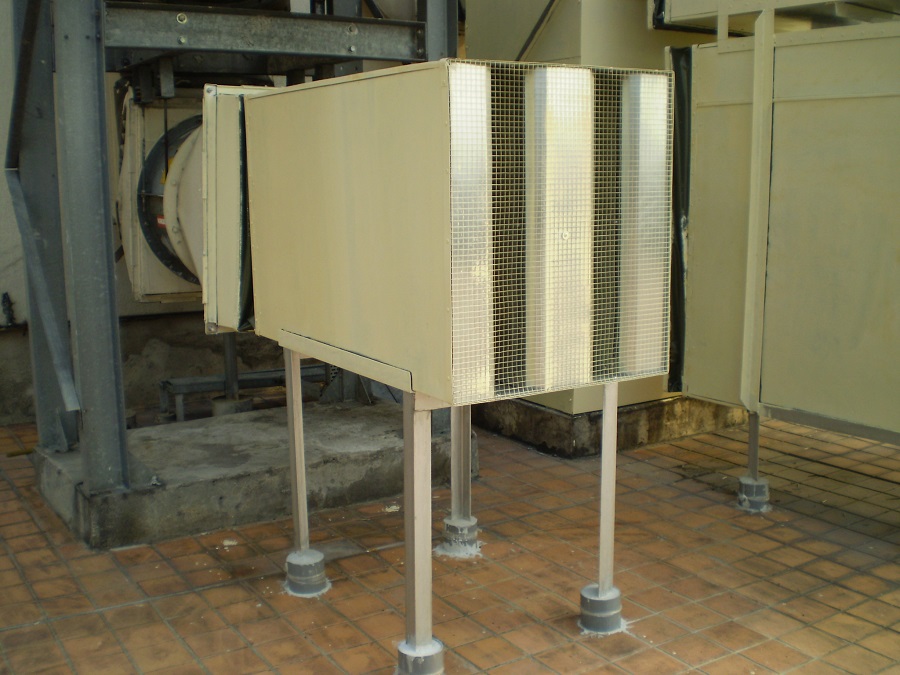RECTANGULAR SILENCER
Construction
Body of the silencer:
- Exterior casing in galvanized steel, stainless steel or other weldedmaterial.
- Exterior casing in steel with minimum 0.8mm thickness with structural steel.
- Additional reinforcements (frame, angle, etc)
- Special paint finishes for certain environment condition.
- Holes on flange for lifting and connection.
Baffles:
- Choice of wool types (rockwool, fiberglas, etc)
- Choice of wool thickness and density.
- Polyester film, black matt finished, glass cloth, etc to protect the acoustic media from oil, water, fiber erosion, etc.
- Hexagon profile for flow entry and taper end for flow discharge to limit turbulence and pressure drop.
- Perforated galvanized steel, stainless steel or other material.
- Baffles assemble with internal structure.
Connecting flanges:
- Angle iron or TDC/TDF flanges to connect to the ventilation duct system.
Special assembly:
- In case of concentrated smoke or accumulated dust, it is possible to opt for periodic cleaning or replacement of baffles.




